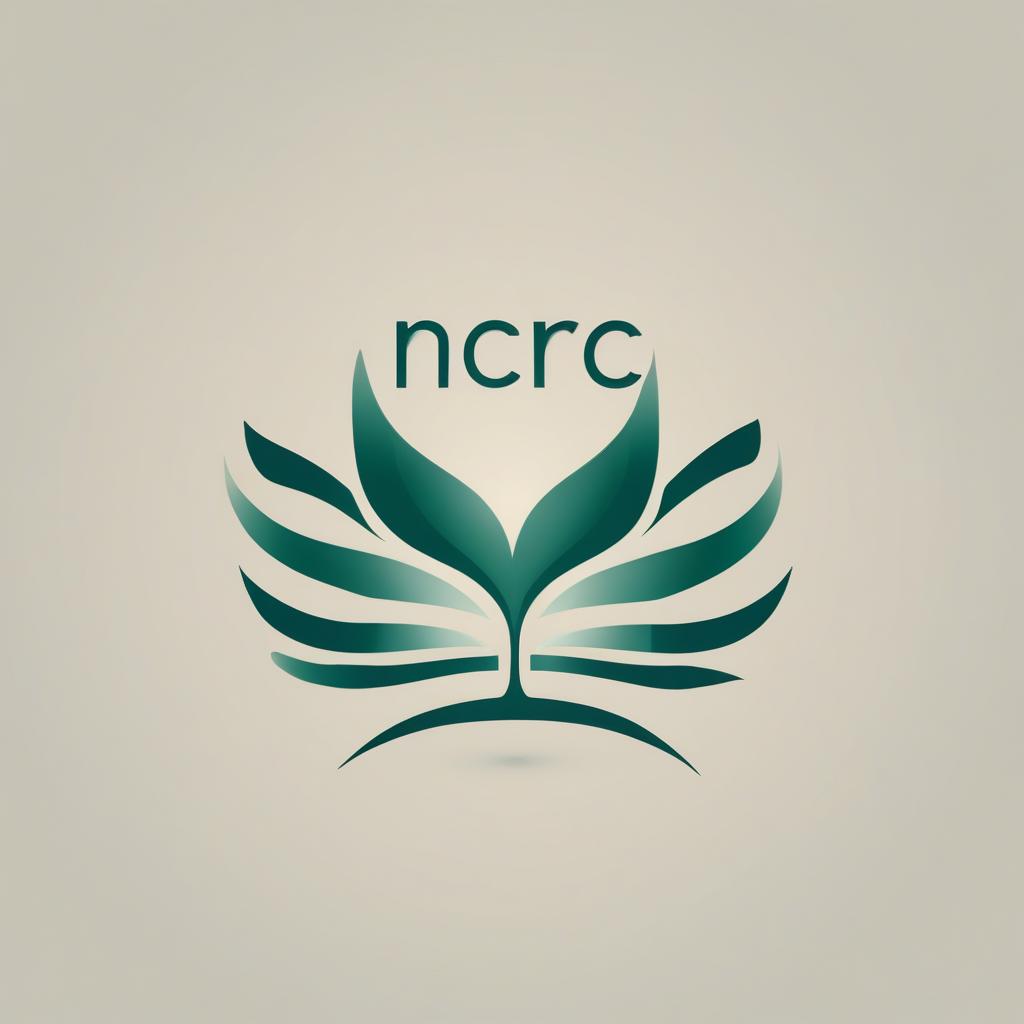Research Methodologies
1. Quantitative Research
Quantitative research focuses on gathering numerical data and analyzing it using statistical methods. It is often used to test hypotheses or examine relationships between variables. Common methods in quantitative research include:
Survey Research: Using questionnaires or interviews to collect data from a large number of respondents.
Experimental Research: Involves manipulating one or more variables to determine their effect on other variables (e.g., controlled experiments in labs).
Correlational Research: Investigating the relationship between two or more variables without manipulating them.
Longitudinal Research: Studies the same group of individuals over a long period to observe changes over time.
Cross-Sectional Research: Observing a population at one point in time, often used for comparison between groups.


2. Qualitative Research
Qualitative research focuses on exploring phenomena through non-numerical data, such as words, images, or observations. This methodology is used to understand deeper meanings, experiences, and social phenomena. Methods include:
Case Study:An in-depth exploration of a single case or a small number of cases, often involving multiple data sources.
Phenomenological Research:Focuses on studying the lived experiences of individuals to understand a particular phenomenon.
Grounded Theory: Involves developing theories based on data collected from participants, rather than testing existing theories.
Ethnographic Research: Involves the researcher immersing themselves in a community or group to study their culture and behaviors.
Narrative Research: Focuses on collecting and analyzing the stories of individuals, often in the form of interviews or written accounts.
3. Mixed Methods Research
Mixed methods research combines both quantitative and qualitative approaches. Researchers use qualitative methods to explore and understand a problem, and then quantitative methods to test and validate the findings. This approach is often used to provide a more comprehensive understanding of a research question.
4. Descriptive Research
Descriptive research aims to describe characteristics of a population or phenomenon being studied. It doesn't attempt to influence or manipulate variables but instead focuses on observation and documentation. Methods include: Observational Studies: The researcher observes participants without intervention. Case Reports/Case Series: Detailed descriptions of an individual case or a small group of cases.
5. Exploratory Research
Exploratory research is used to explore a new or under-researched area where little is known. It is often used in the early stages of research and aims to gather preliminary insights or generate hypotheses. Methods include: Literature Reviews: Reviewing existing literature to identify gaps or new questions. Pilot Studies: Small-scale studies used to test research methods and procedures.
7. Historical Research
Historical research involves studying past events to understand how they occurred and their impact on the present. Researchers use primary and secondary sources to gather evidence and analyze historical data. and is intended to solve practical problems while improving practice.

8. Evaluation Research
9. Clinical Research
10. Theoretical Research
11. Action Research
Extracting Actionable Knowledge from Raw Data


Extracting Actionable Knowledge from Raw Data
At NorCAl Research Consulting,
We specialize in transforming raw data into critical insights through advanced, proprietary technologies and cutting-edge analytical methodologies. Our mission is to equip clients with strategic recommendations that drive success and foster a genuine competitive edge in today’s dynamic business environment.
This page offers an overview of our data collection and analytical approaches. With expertise across a wide spectrum of market research methodologies, we tailor our solutions to align precisely with your unique needs
For further inquiries or to discuss how we can support your business objectives, please don’t hesitate to contact us.
Data Collection
- Ethnographic Site Visits
- Focus Groups and Unfocus Groups
- Focus Group Venues
- In-Depth Interviews (IDIs)
- Key Features of IDIs
- Secret Shopping (Mystery Shopping)
- Surveys
- Survey Venues
- Specialized Surveys
- Syndicated Research
Analytical Techniques
- Conjoint Analysis & Discrete Choice Modeling
- JTBD & Customer Anthropology
- Research Techniques
- JTBD & Customer Anthropology
- Market Modeling & Simulation
- Monte Carlo Simulations
- Multivariate Analysis
- Perceptual Mapping
- TURF Analysis
- Win-Loss Analysis
Data Collection
Ethnography Ethnographic Site Visits
Ethnographic site visits involve researchers observing participants in their own environments. An interviewer accompanies a consenting respondent as they utilize and/or shop for a product or service in order to learn what drives customer need and usage. This method can help uncover any un-realized issues or difficulties customers face which can lead to new business opportunities.


Focus Groups and Unfocus Groups
Focus groups are a cornerstone of qualitative research, bringing together individuals who share common characteristics to engage in moderated discussions. At NorCalrc, we emphasize the importance of domain expertise for moderators to facilitate insightful, impactful conversations
In addition to traditional focus groups, we champion the innovative concept of “unfocus groups.” This flexible, exploratory approach delves deeper into understanding your customers, uncovering their unstated needs and behaviors.
Focus Group Venues
We offer a range of focus group formats tailored to suit various research needs and objectives
1. In-Person - Interactive Round Table
The classic focus group format involves participants gathering in a physical location for a dynamic, face-to-face discussion led by a skilled moderator.
2. In-Person - Observational
In this format, participants’ behaviors and interactions are observed discreetly through one-way mirrors or recordings. This approach is particularly valuable for understanding how customers engage with and adapt to a product.
3. Online - Asynchronous
This method resembles a virtual bulletin board, allowing participants to respond to prompts at their convenience. Responses are unprompted by direct interaction, enabling more organic insights.
4. Online - Real-Time
Real-time online focus groups leverage live chat or video conferencing tools to facilitate discussions. These sessions often incorporate visual aids to enhance engagement and depth of understanding.
5. Phone
Phone focus groups operate via conference calls, utilizing landlines, mobile phones, or web-based calling platforms. We are also exploring innovative approaches, such as text message-based focus groups, currently in beta testing.

In-Depth Interviews (IDIs)
In-depth interviews (IDIs) are a qualitative research method designed to uncover detailed insights through one-on-one conversations with carefully selected respondents who possess specialized knowledge in a relevant area. These interviews employ non-directive techniques to explore underlying motivations, attitudes, and perceptions, often revealing insights that other methods may not capture.
At NorCalrc, we prioritize the expertise of both interviewers and respondents. Our interviewers bring domain-specific knowledge to facilitate meaningful and informed discussions, while participants are chosen based on their relevance and depth of experience, ensuring quality insights over sheer volume.
Secret Shopping (Mystery Shopping)
Secret shopping, also known as "mystery shopping," is a research technique in which a trained researcher assumes the role of a typical consumer to evaluate a specific product, service, or experience. Traditionally, this method has been employed to assess customer service quality, measure compliance with regulations, and gather detailed insights into specific offerings.
With the rise of e-commerce, secret shopping has evolved to include the evaluation of digital platforms, making it a valuable tool for assessing user experience (UX) and website usability. Whether conducted in-store or online, secret shopping provides organizations with actionable feedback to enhance customer satisfaction and operational effectiveness.
For more information on how our secret shopping services can support your business objectives, contact us today.
Surveys
Surveys are a cornerstone of quantitative research, allowing organizations to collect and analyze data from respondents through carefully designed questionnaires. These surveys are instrumental in identifying trends, measuring attitudes, and guiding decision-making. Popular micro-surveys, such as the **Net Promoter Score (NPS)** and **Customer Effort Score (CES)**, are frequently utilized at the conclusion of customer interactions to gauge satisfaction and loyalty.




Survey Venues
We utilize multiple channels to collect survey responses, ensuring flexibility and accessibility:
Respondents are approached in public spaces, such as shopping centers, conferences, or even door-to-door, to participate in a survey. This method is particularly effective for targeting specific demographics in a defined location.
The ubiquity of mobile devices and text messaging has created new opportunities for gathering survey data quickly and efficiently, resulting in higher response rates.
The internet offers the most scalable approach for surveys, using methods such as email, web forms, or pop-ups. Online surveys provide a cost-effective and fast means of collecting large volumes of data.
Postcard surveys remain a valuable option for reaching audiences less familiar with technology. Including return postage improves response rates and accessibility.
Specialized Surveys
We also deploy advanced survey techniques tailored to specific research objectives:
1. Conjoint Surveys
Conjoint surveys evaluate products or services based on their attributes. Respondents are presented with profiles featuring varying attribute levels and asked to rate or choose their preferred options. This approach is especially useful for:
- Measuring price sensitivity.
- Designing new products or services.
For more detail, refer to our **Conjoint Analysis & Discrete Choice Modeling** services.
2. MaxDiff Surveys
Also known as "best-worst scaling," MaxDiff surveys ask respondents to rank attributes in terms of importance or preference from a limited set. The process is repeated with varying combinations to identify key priorities. Applications include:
- Testing alternative messaging.
- Evaluating product features.
- Assessing brand preferences.
For more information on how our survey methods can provide actionable insights, contact us to discuss your research needs.
Syndicated Research
At NorCal Research Consulting, we frequently integrate business intelligence and syndicated research sources into our analyses. While this data may not have been created specifically for the study at hand, it often provides valuable support for findings, offers deeper insights into emerging trends, and adds critical context to uncover unique market opportunities.
Usability Labs
Usability labs are a valuable research method for testing software, prototypes, or applications to evaluate and enhance user experience. By placing a product in the hands of potential users, researchers can observe their interactions and gather direct feedback. Participants are tasked with completing specific actions while being monitored, enabling researchers to identify areas where users encounter challenges or confusion.
This approach is particularly effective for uncovering trends in initial user experiences and improving design functionality. While usability labs are traditionally conducted in-person, they can also be conducted online via video conferencing, especially when evaluating software or device usability.
For more information on how usability labs can optimize your product's user experience, contact NorCal Research Consulting.


Analytical Techniques:
Conjoint Analysis & Discrete Choice Modeling
Conjoint analysis and discrete choice modeling are advanced analytical techniques that leverage survey data, such as conjoint or MaxDiff surveys, to evaluate and predict consumer decision-making across varying product or service options.
Conjoint Analysis
This technique assesses how respondents value different attributes of a product or service. By analyzing the rankings or choices made by respondents, conjoint analysis estimates the relative importance of each attribute and its influence on customer decisions. This approach is particularly useful in:
- Designing new products or services.
- Determining optimal pricing strategies.
- Identifying the features most valued by customers.
Discrete Choice Modeling
Discrete choice modeling builds on conjoint analysis by predicting consumer behavior. It explains or forecasts choices from a set of mutually exclusive alternatives, providing a robust framework to simulate market scenarios and optimize decision-making.
These techniques are powerful tools for understanding customer preferences and tailoring offerings to meet market demands. For a detailed discussion of how these methods can benefit your organization, contact NorCal Research Consulting.
Understanding customer behavior and motivations is at the core of effective market research. Two complementary methodologies, **Jobs to Be Done (JTBD)** research and **customer anthropology**, provide powerful frameworks for uncovering customer needs and designing solutions to address them.
JTBD research focuses on the underlying problems or "jobs" that drive customers to use a product or service. By identifying these core needs, organizations can better align their offerings to address specific challenges and improve customer satisfaction.
This methodology involves observing customers in their natural environments—whether at work, at home, or during product use—to uncover unmet needs and behaviors. By understanding the context of how customers interact with products or services, companies can develop more efficient and targeted solutions.





Research Techniques
Customer anthropology and JTBD research often utilize a variety of methods, including:
Surveys: To gather broad insights into customer challenges and preferences. .
In-Depth Interviews (IDIs): For detailed exploration of customer experiences and motivations.
Focus Groups: To foster group discussions that reveal shared needs or challenges.
Usability Labs: To test how customers interact with prototypes or products.
Ethnographic Site Visits:To observe customers in real-world settings and identify unarticulated needs.
For organizations seeking to deeply understand and serve their customers, JTBD and customer anthropology offer a pathway to innovation and success. Contact NorCal Research Consulting to learn more about these methodologies.
JTBD & Customer Anthropology
JTBD & Customer Anthropology
Jobs to Be Done (JTBD)
Jobs to Be Done (JTBD)
Customer Anthropology
Customer Anthropology


Research Techniques
Customer anthropology and JTBD research often utilize a variety of methods, including:
Surveys: To gather broad insights into customer challenges and preferences. .
In-Depth Interviews (IDIs): For detailed exploration of customer experiences and motivations.
Focus Groups: To foster group discussions that reveal shared needs or challenges.
Usability Labs: To test how customers interact with prototypes or products.
Ethnographic Site Visits:To observe customers in real-world settings and identify unarticulated needs.
For organizations seeking to deeply understand and serve their customers, JTBD and customer anthropology offer a pathway to innovation and success. Contact NorCal Research Consulting to learn more about these methodologies.
Market Modeling & Simulation
Market modeling and simulation provide a comprehensive view of the competitive landscape by analyzing key market dynamics through segmentation strategies and surveys involving critical stakeholders, such as customers, suppliers, and partners. This approach is essential for:
- Assessing market share and competitive positioning.
- Identifying untapped opportunities and growth areas.
- Supporting strategic decision-making with actionable insights.
Monte Carlo Simulations
Monte Carlo simulations, also known as “multiple probability simulations,” are a quantitative technique used to evaluate potential outcomes and their probabilities in decision-making scenarios. By running numerous simulations with varying inputs, this method provides robust insights into risk and uncertainty, making it particularly effective for:
- Risk analysis and management.
- Predicting outcomes in uncertain or complex environments.
- Enhancing decision-making confidence.
Both techniques are indispensable tools for businesses aiming to understand market dynamics and make data-driven decisions. To explore how market modeling and Monte Carlo simulations can benefit your organization, contact NorCal Research Consulting.
Multivariate Analysis
Multivariate analysis refers to a set of statistical techniques used to examine the relationships among multiple variables simultaneously. This method is particularly useful when it is assumed that a subject is influenced by several factors, such as how price sensitivity, brand perception, and user experience interact to impact customer retention. By analyzing these relationships, businesses can gain deeper insights into complex behaviors and improve decision-making. One key technique within multivariate analysis is **regression analysis**, which assesses the strength and nature of the cause-and-effect relationships between two or more variables.
Also known as **Multidimensional Scaling (MDS)** or **Mathematical Analysis of Perception and Preference (MAPP)**, **perceptual mapping** visually represents consumer perceptions in relation to a company, brand, or product. This technique maps out how consumers view different attributes and competitors, helping businesses understand their market position and identify opportunities for improvement. Perceptual mapping is especially effective when used in conjunction with other methods, such as discrete choice modeling, to provide a comprehensive view of consumer preferences. At NorCal Research Consulting, we find perceptual mapping particularly valuable for communicating research findings clearly across organizations.
TURF (Total Unduplicated Reach and Frequency)** analysis is a powerful technique for evaluating survey data to identify trends in preferences across combinations of variables. It estimates the reach and frequency of different product or service combinations, helping businesses determine which combinations will appeal to the greatest number of customers. TURF analysis is useful for:
- Optimizing product offerings to maximize customer reach.
- Assessing the effectiveness of marketing strategies in targeting diverse customer segments.
- Estimating market potential and identifying growth opportunities.
For more details on how these advanced analytical techniques can help your business make data-driven decisions, contact NorCal Research Consulting.


